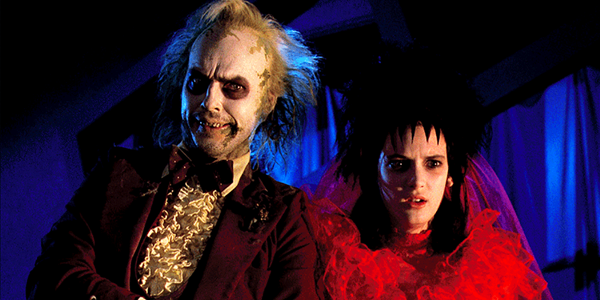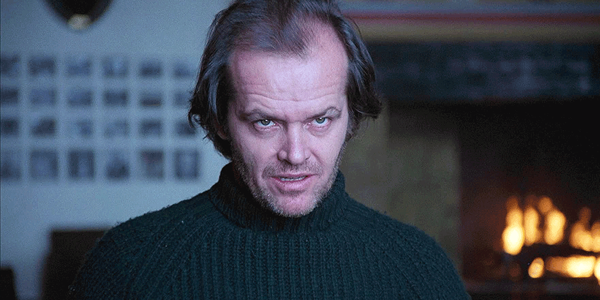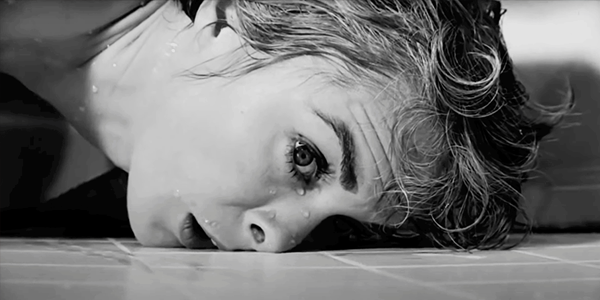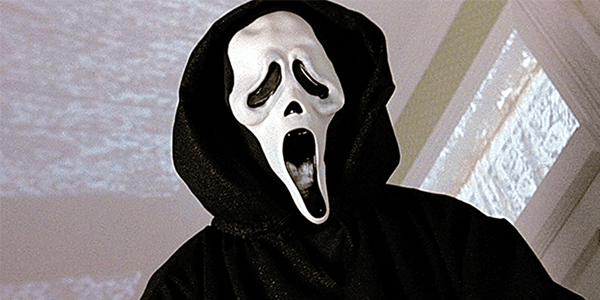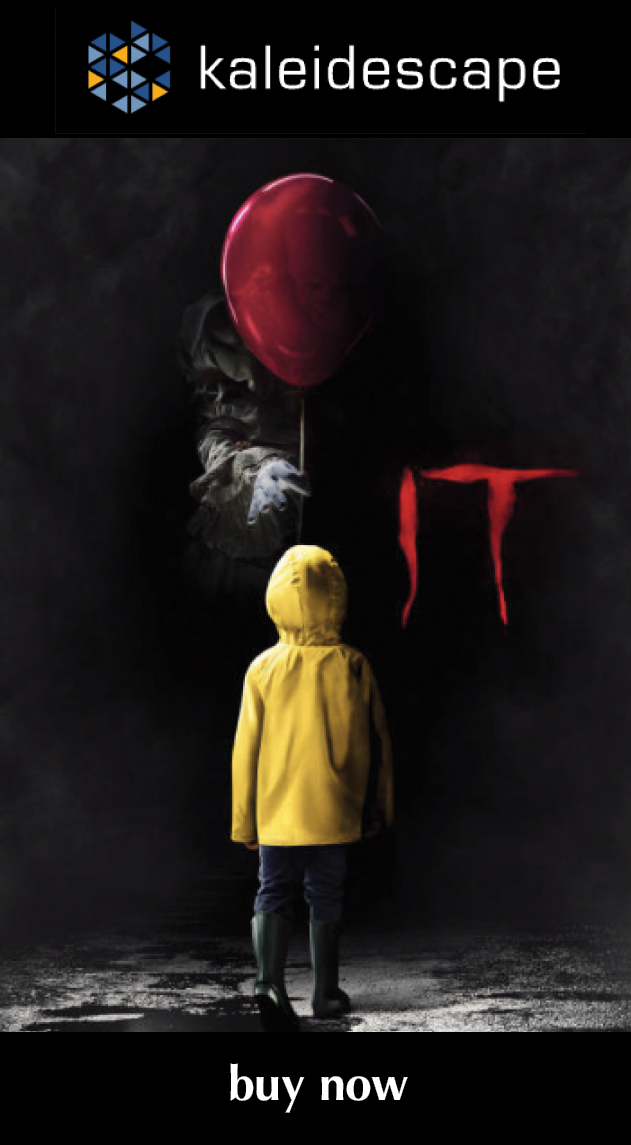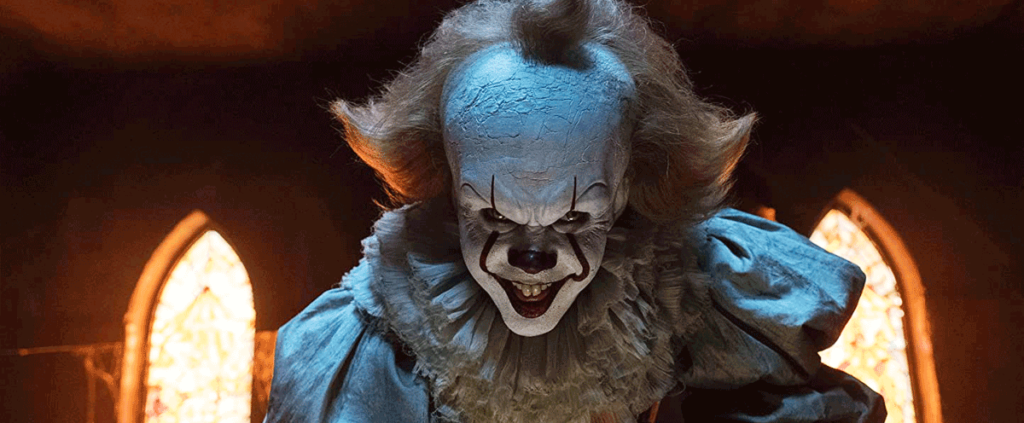
review | It (2017)
related reviews
Sign up for our monthly newsletter
to stay up to date on Cineluxe
This adaptation of the Stephen King novel is a major reworking of the source material but that yields big dividends in its relevance, themes, and atmosphere
by Dennis Burger
October 20, 2020
Had I known going in just how drastically Andy Muschietti restructured Stephen King’s It when adapting the 1,138-page novel into two movies, I probably never would have given it a chance. In case you’re not familiar with the book, it follows the adventures and tribulations of seven friends known collectively as “The Loser’s Club,” cutting back and forth between their adolescent and adult encounters with a shapeshifting, homicidal cosmic horror who takes the form of a clown known as Pennywise.
The intercutting between the characters as adults and adolescents is crucial to the plot (not to mention the emotional impact) of the novel, so if you had told me ahead of time that Muschietti shuffled the story like a deck of cards, then laid out the events in chronological order, with the first movie focusing on the story of the Loser’s Club as kids and the second serving as a sequel focusing on their adult experiences, I would have explained to you (probably with as much condescension as I could humanly muster) that such an approach would miss the point of the book entirely.
And although that may be the case, what Muschietti has done is turn this story into two distinct stories, each with its own themes, and each of which—much to my pleasant surprise—works as its own self-contained experience, with a proper beginning, middle, and ending.
The other big change Muschietti and screenwriter Gary Dauberman made to the source material was an update to the timeline. Rather than starting in 1957, as does the book, It moves the Loser’s Club’s youth to 1989, and also adds a couple of years to their ages. The former change not only allows the cinematic sequel to take place in the present day, but also allows Muschietti to rely on cultural references that will likely be a bit more familiar to modern audiences. The latter change keeps the film from veering too far into exploitative territory and also makes the story somewhat more believable.
Muschietti and Dauberman also removed some of the cosmic/spiritual aspects of the story that strain credulity to its breaking point, and what we’re left with is a movie that, in many ways, sort of feels like a scary, R-rated riff on The Goonies. There are also shades of Stranger Things here and there (and not merely because Finn Wolfhard, that series’ star, plays a key role in the film).
Despite the comparisons, It manages to carve out its own identity. A lot of the credit for that goes to Bill Skarsgård, whose performance as Pennywise is unforgettable. Rather than borrow anything from Tim Curry, who played the role first in ABC’s two-part miniseries adaptation from 1990, Skarsgård makes the character his own, bringing a wholly alien physicality to the performance that makes one thing abundantly clear from the giddy-up: This isn’t your garden-variety sewer-dwelling murder-clown we’re dealing with here.
The look of the film also contributes to the sort of distinctive and effective personality lacking in so many of today’s horror movies. Shot on ArriRaw in a combination of 2.8K and 3.4K, the movie has a rich and gorgeous palette that makes even its most pedestrian scenes visually engaging. What’s more, you’d never know from looking at the imagery’s crisp edges, luscious textures, and fine detail that it was finished in a 2K digital intermediate. It is further proof that this sort of thing just doesn’t matter as much as some people would have you believe. The important thing is that Kaleidescape’s download is above reproach in terms of definition and detail.
HDR is also put to good use, not only in delivering the movie’s rich colors but also in allowing a good bit of extra depth in the shadows. Make no mistake about it—It is an incredibly dark film—one that should be viewed in a completely light-controlled room. But even with the lights out, the Blu-ray release made portions so inscrutably dark that it was difficult to tell what was going on at all. The 4K HDR transfer rectifies that at least enough to make even the darkest scenes discernible. Long story short, it may come from a 2K DI, but the 4K HDR release of It—at least as presented by Kaleidescape—is amazing video demo material, and comes darn close to being a reference-quality transfer.
The Dolby TrueHD Atmos is also everything you would expect the soundtrack for a movie like this to be. Directional sound effects are aggressive as hell, the bass is absolutely britches-leg-flapping, and the overall creepy ambiance of the movie is handled fantastically by the soundtrack. My only real beef is that voices occasionally get lost in the mix. Don’t blame your center speaker if you find some of the dialogue a bit unintelligible—instead blame the sound engineers. That said, this problem isn’t nearly so bad here as it has been in the past few Chris Nolan films.
As for the movie itself, my only real beef is that it feels a little short. An odd statement to make about a 135-minute horror flick, I know, but It is so packed with characters, most of whom have their own compelling individual storylines distinct from the group dynamic, that it just whizzes by. A few extra minutes’ worth of runtime would have allowed Muschietti to flesh out a couple of characters that seem underserved here. Stanley Uris, for example—played wonderfully by the young Wyatt Oleff—serves such a minor role in the overall story that he could have just as easily been written out of the screenplay and it hardly would have been the biggest departure from the novel. The relationship between Eddie Kaspbrak and his mother is also a bit undeveloped, leaving the resolution of their storyline feeling somewhat unsatisfying.
Those quibbles aside, It is a surprisingly good horror movie that thankfully relies more on scares than gross-outs to keep you glued to the screen and huddled under your blanket. Don’t go into it expecting a faithful adaptation of Stephen King’s book (although, given how poorly that one has aged, that’s probably a good thing) but do go in expecting a very satisfying reinterpretation of parts of the novel—one that absolutely works on its own terms, whether you have any intention of watching the sequel or not.
Dennis Burger is an avid Star Wars scholar, Tolkien fanatic, and Corvette enthusiast who somehow also manages to find time for technological passions including high-end audio, home automation, and video gaming. He lives in the armpit of Alabama with his wife Bethany and their four-legged child Bruno, a 75-pound American Staffordshire Terrier who thinks he’s a Pomeranian.
PICTURE | Above reproach in terms of definition and detail, the Kaleidescape presentation of the 4K HDR release is amazing video demo material and comes darn close to being a reference-quality transfer
SOUND | Directional sound effects in the Atmos mix are aggressive as hell, the bass is absolutely pants-leg-flapping, and the overall creepy ambiance of the movie is handled fantastically
© 2025 Cineluxe LLC


